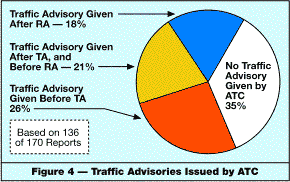Understanding Traffic Alert and
Collision Avoidance Systems TCAS
Today I want to talk a very
interesting issue regarding about the TCAS, I know all Pilots are very familiar,
of course about this system in the cockpit that is independent of, but
compatible with, the ground base ATC network. With the use of an onboard computer,
a TCAS processes transponder signals from other aircraft to determine their
positions, altitudes, and rates of closure.
So, these signals can be received
and analyzed up to 40 mile away. That information is presented to the flight
crew on either the cockpit weather radar scope, or a specially, designed TCAS
color display.
TCAS System is a family of airborne
equipment that provides collision avoidance protection and airspace Situational
Awareness. TCAS was designed to increase Cockpit Awareness for the prevention
of Mid-Air collisions.
So, because transponders
interrogation is an integral part to a TCAS, let’s take a quick review and
refresh the memory at the three types of transponders and see how each works,
or doesn’t work, with the TCAS system.
A transponder, all Pilots recognizes
is an onboard device that transmits a code signal back to ATC also that
numbered code appears as a distinct pattern on the controller’s radar scope,
the same transponder signal, however, provides slightly different information
to the TCAS.
Anyway all pilots identify the different
modes of transponders, they are as follows as:
Mode-A, Mode- C, Mode- S. Mode-S is
the most sophisticated of the transponders and is an integral part of TCAS II.
So, there are different levels of
TCAS systems: TCAS I, TCAS II, TCAS III, and TCAS IV.
TCAS I: is a low power system that
has 40 nautical miles range. It consists of a TCAS antenna, TCAS processor with
a 125 watt peak power transmitter, and a display unit.
TCAS II: combined with a Mode-S transponder,
scans a volume of airspace around the aircraft using two antennas; one on the
top of the fuselage and the other below.
TCAS III: Originally designated TCAS
II Improved, TCAS III was intended as an expansion of the TCAS II concept to
include horizontal resolution advisory capability.
TCAS III was the "next
generation" of collision avoidance technology which experienced
development by commercial aviation.
TCAS IV: uses additional information
encoded by the target aircraft in the Mode S transponder reply.
TCAS IV has replaced the TCAS III
concept by the mid-1990s, also for years avionics manufactures and the FAA has
been trying to develop a System that includes horizontal maneuvering.
TCAS alerts: TCAS II issues the
following types of aural annunciations:
Traffic advisory (TA)
Resolution advisory (RA)
Clear of conflict.
To understanding well the Concept
the System is an excellent device to Safety to avoid a Mid Air Collision. The
System is impressive but when a poorly trained pilot misunderstands the advisory
commands or mishandles control inputs, TCAS becomes a detriment to Safety
instead of a benefit.
We know as Pilots that one resource
ever stands alone. TCAS meant to enhance a see and avoid environment, compliment
the Air Traffic Control System, and increase Situational Awareness.
So, but when it’s misused, the
negative effects can be far more negative to collision avoidance than you might
realize.
My best advice to all folks and pilots,
who read my Safety Blog, always uses clear and concise communication, avoid ambiguous,
and immediately notify ATC when you have lost sight of your traffic.
Used properly and conscientiously, I
want to be very detailed saying these words again, TCAS can enhance see and avoid,
compliment ATC, and increase Situational Awareness.
Always Fly Safe all the time!!!







